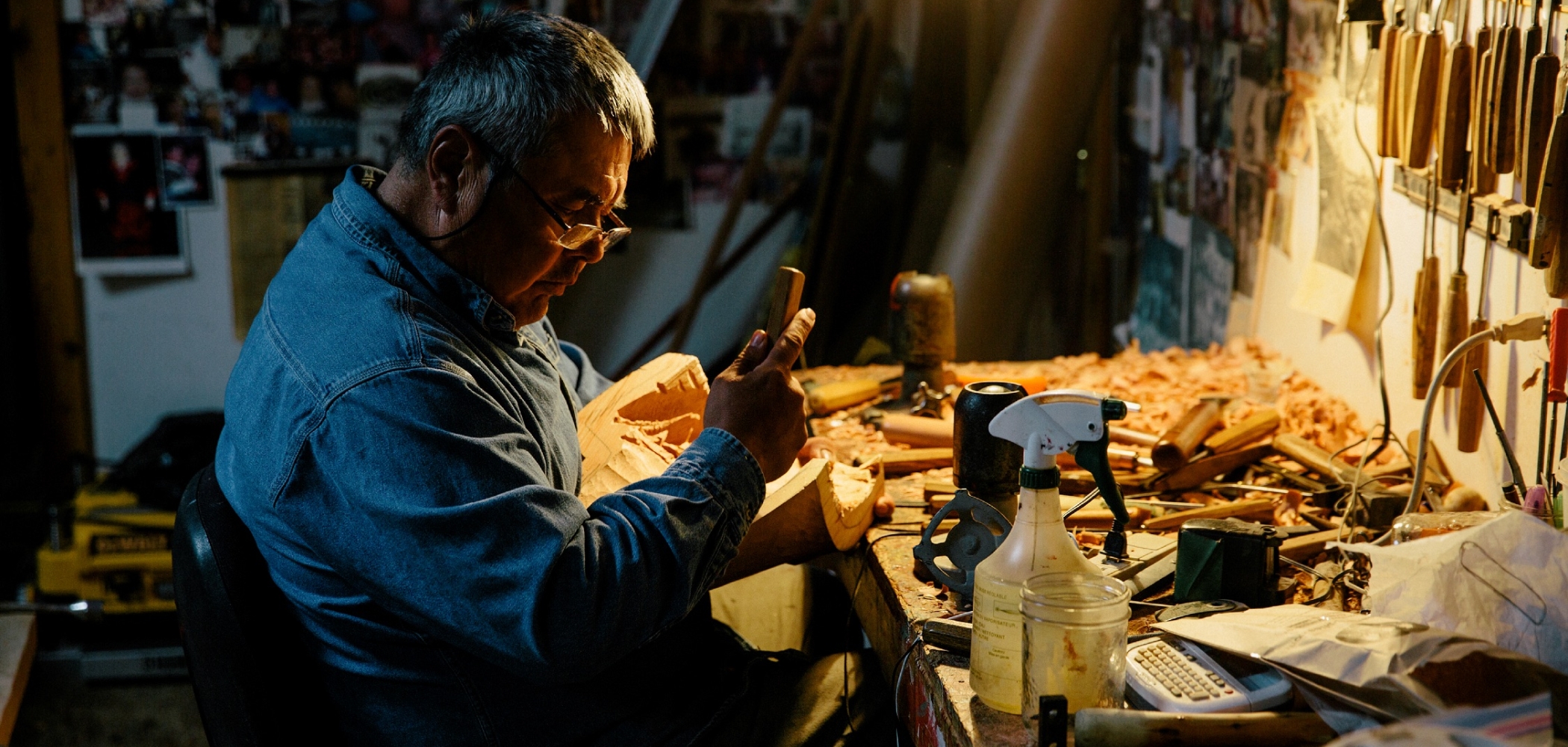The Cowichan Knitters
One of the coziest of all art forms is the Cowichan sweater. A thick, bulky, but relatively lightweight garment with distinctive patterns knit from natural-coloured yarn, it evolved from the centuries-old textile traditions of Coast Salish weavers. Over time, those traditions merged with European knitting tools and techniques to create something beautifully unique to the Cowichan people of southeastern Vancouver Island.
Historically, Cowichan weavers used dog or mountain goat hair to make blankets and garments, but turned to wool once Europeans introduced sheep to the Island in the 1850s. From the newcomers, Indigenous women—almost all Cowichan knitters are women—also learned techniques such as using multiple needles to knit “in the round” so sweaters could be made without seams, as well as incorporating raised stitches and Fair Isle-type patterns. Today, the classic Cowichan sweater is a shawl-collared coat style with Indigenous or sports-themed motifs in natural cream, grey, brown, and/or black.
Find it:
Look for authentic Cowichan sweaters at the Judy Hill Gallery; beware that knockoffs abound, so make sure you’re buying the real deal.






